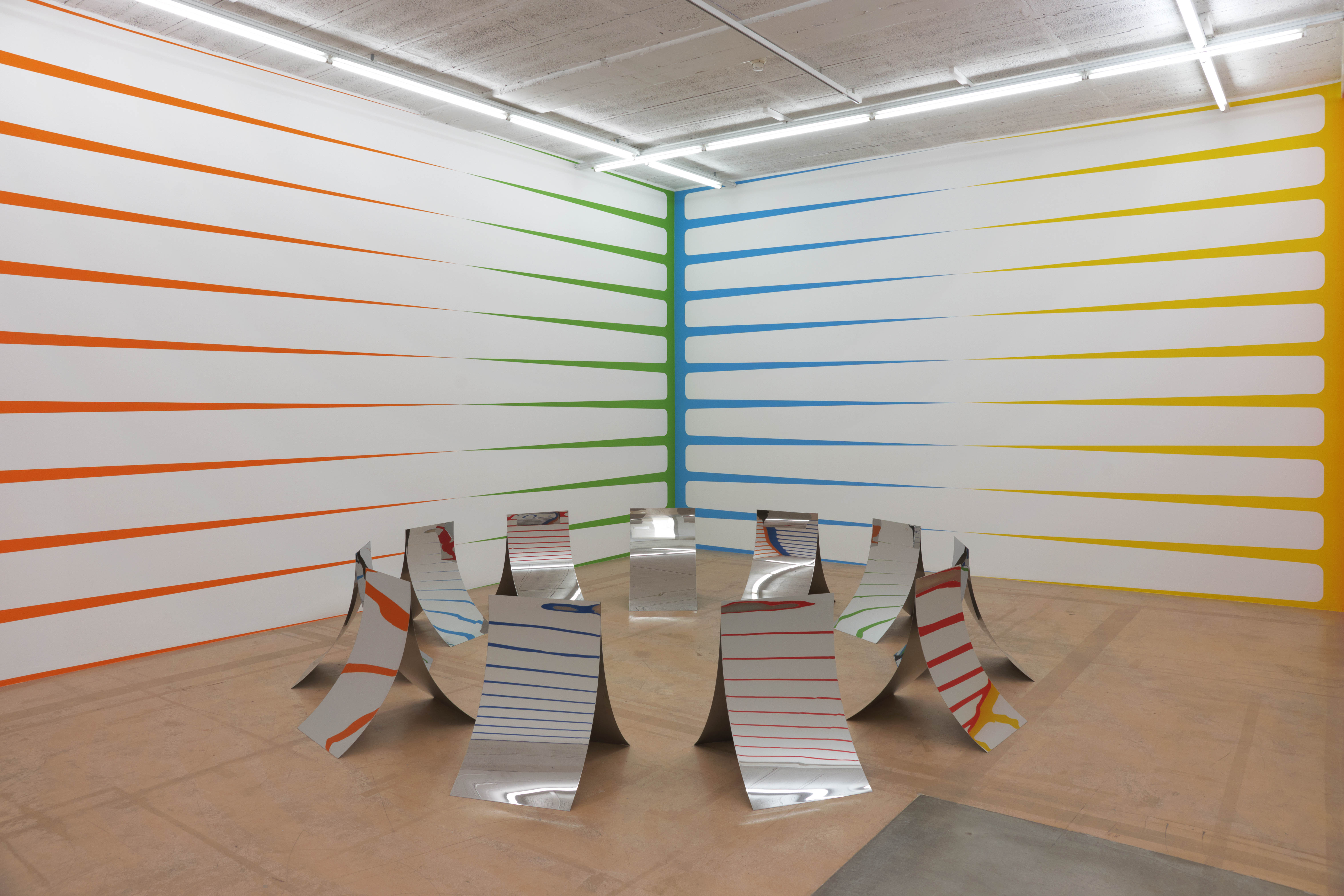
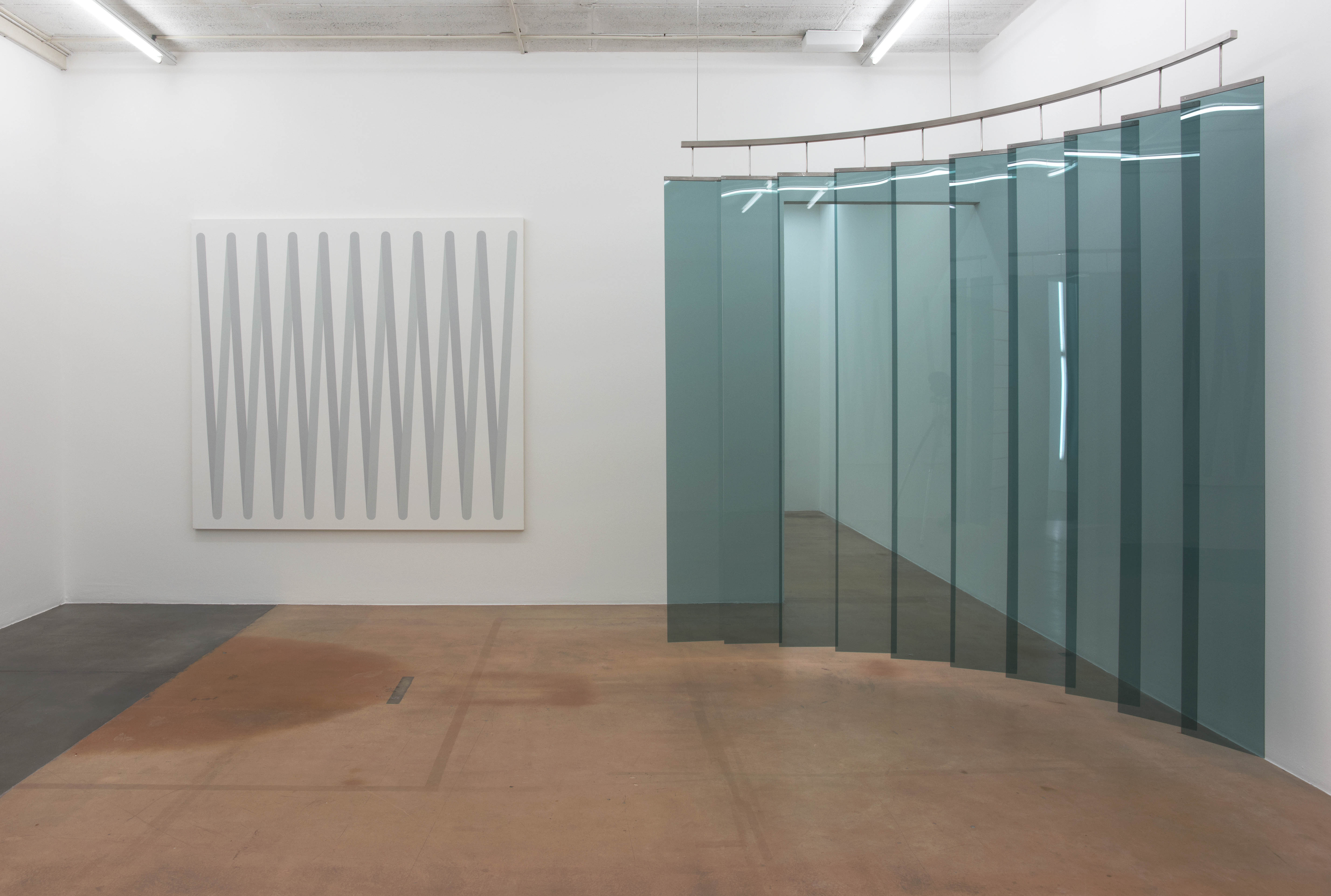
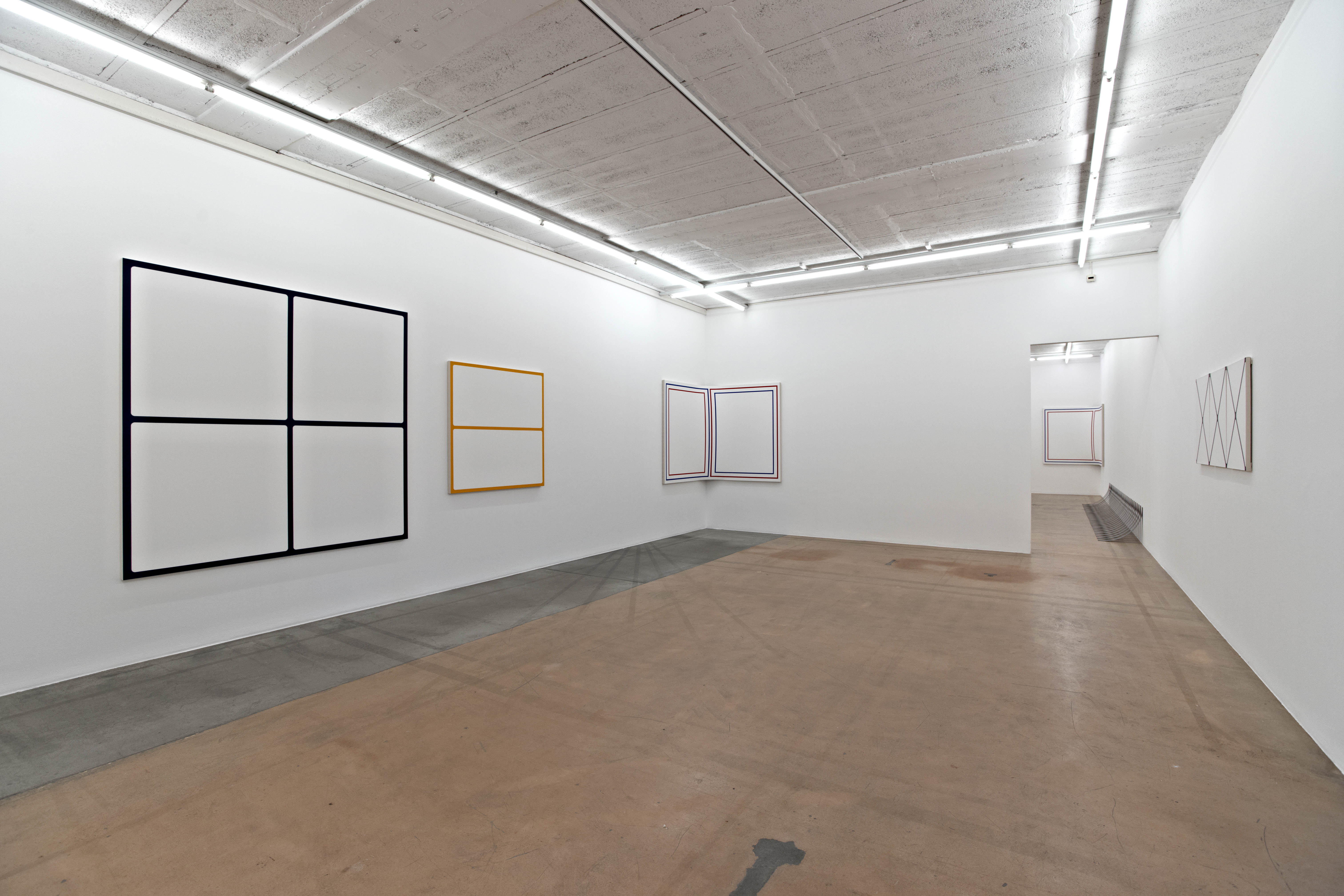
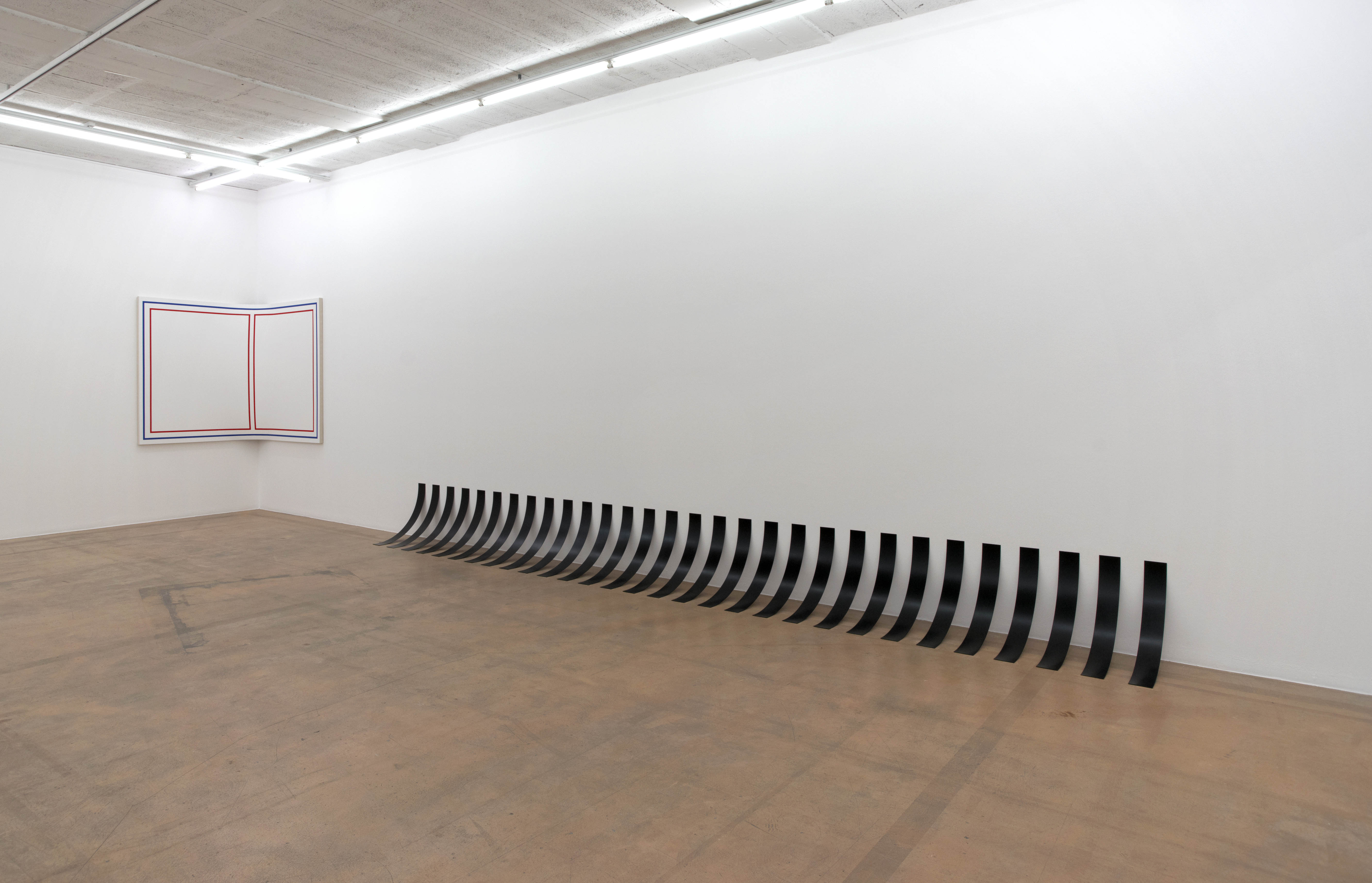
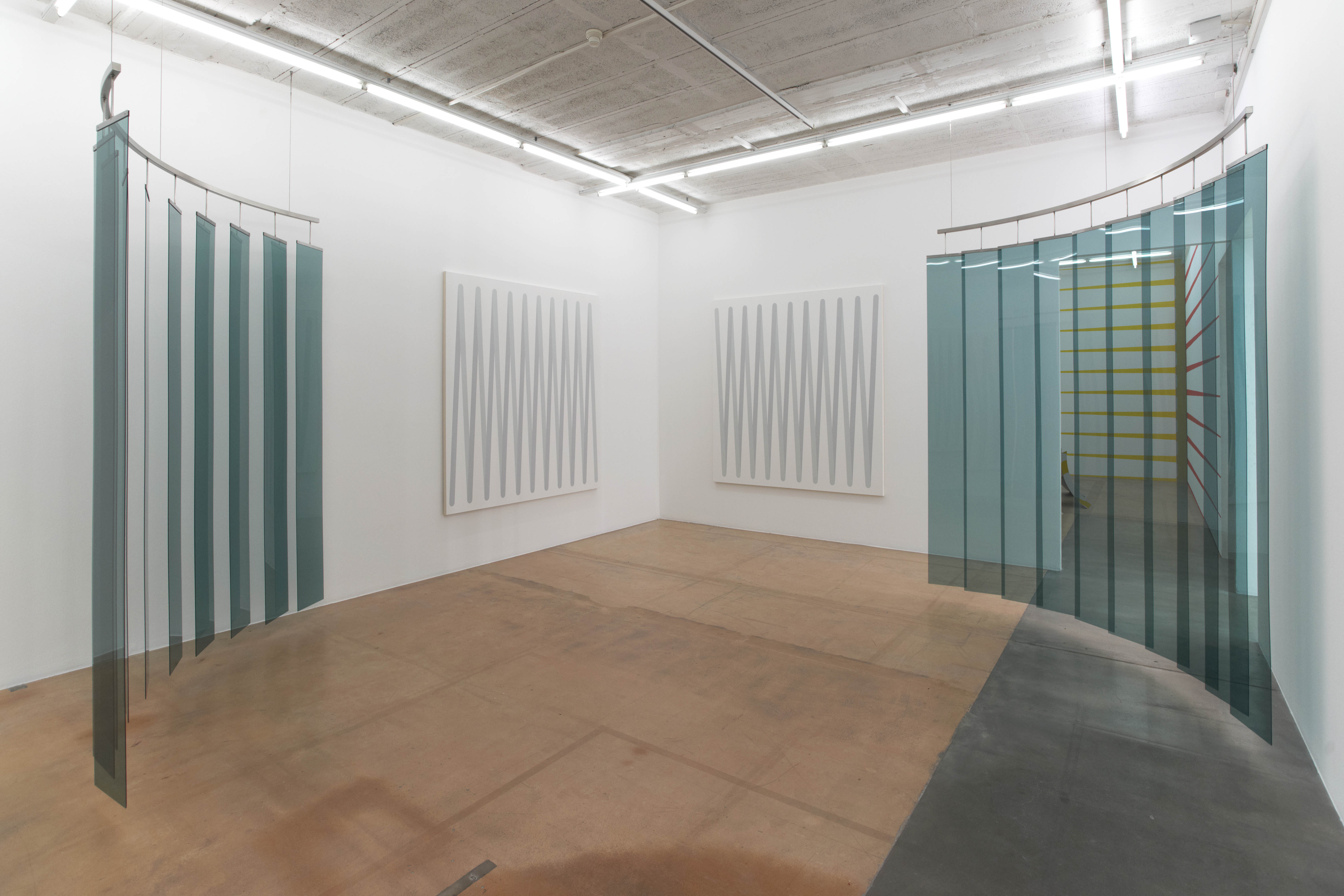
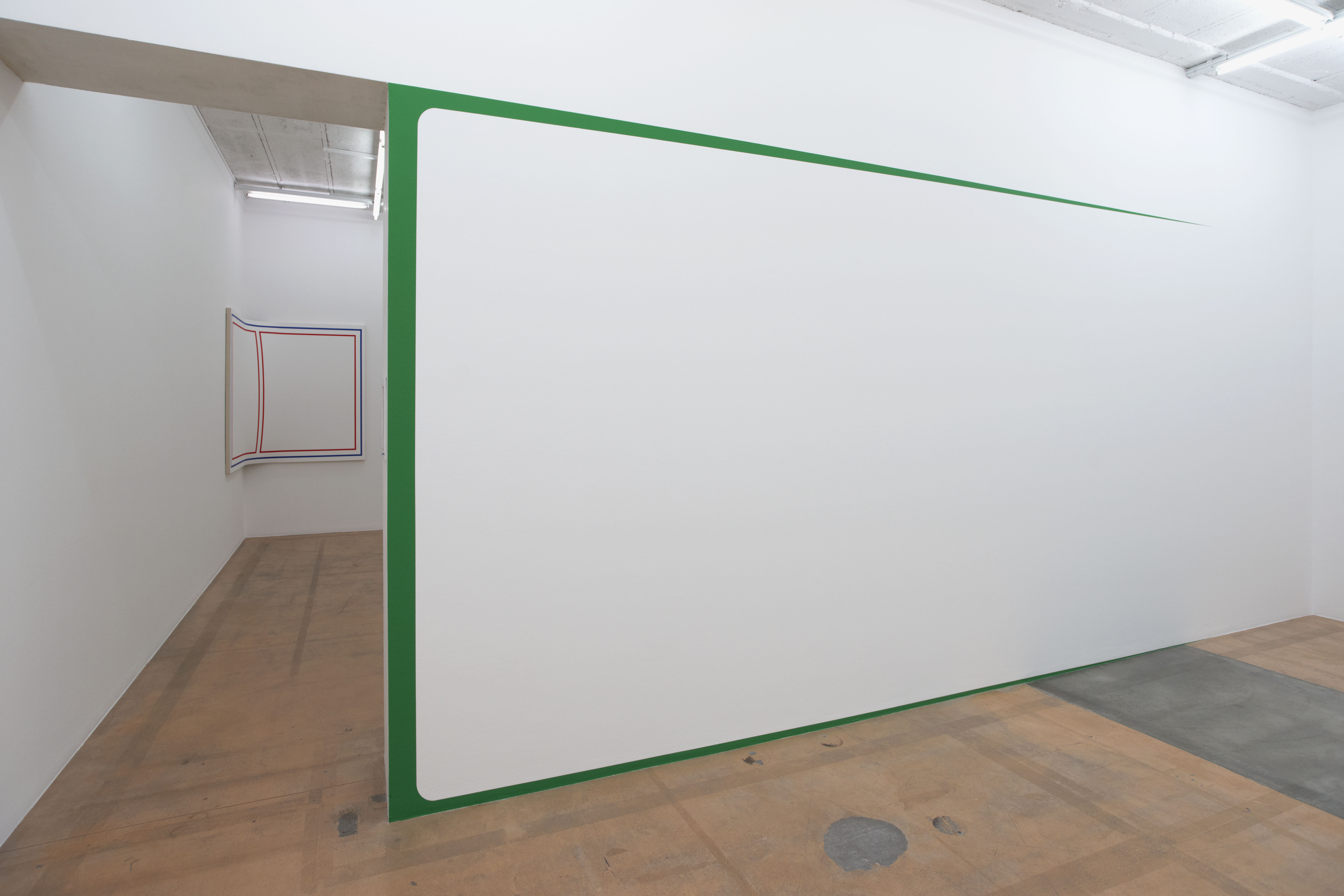
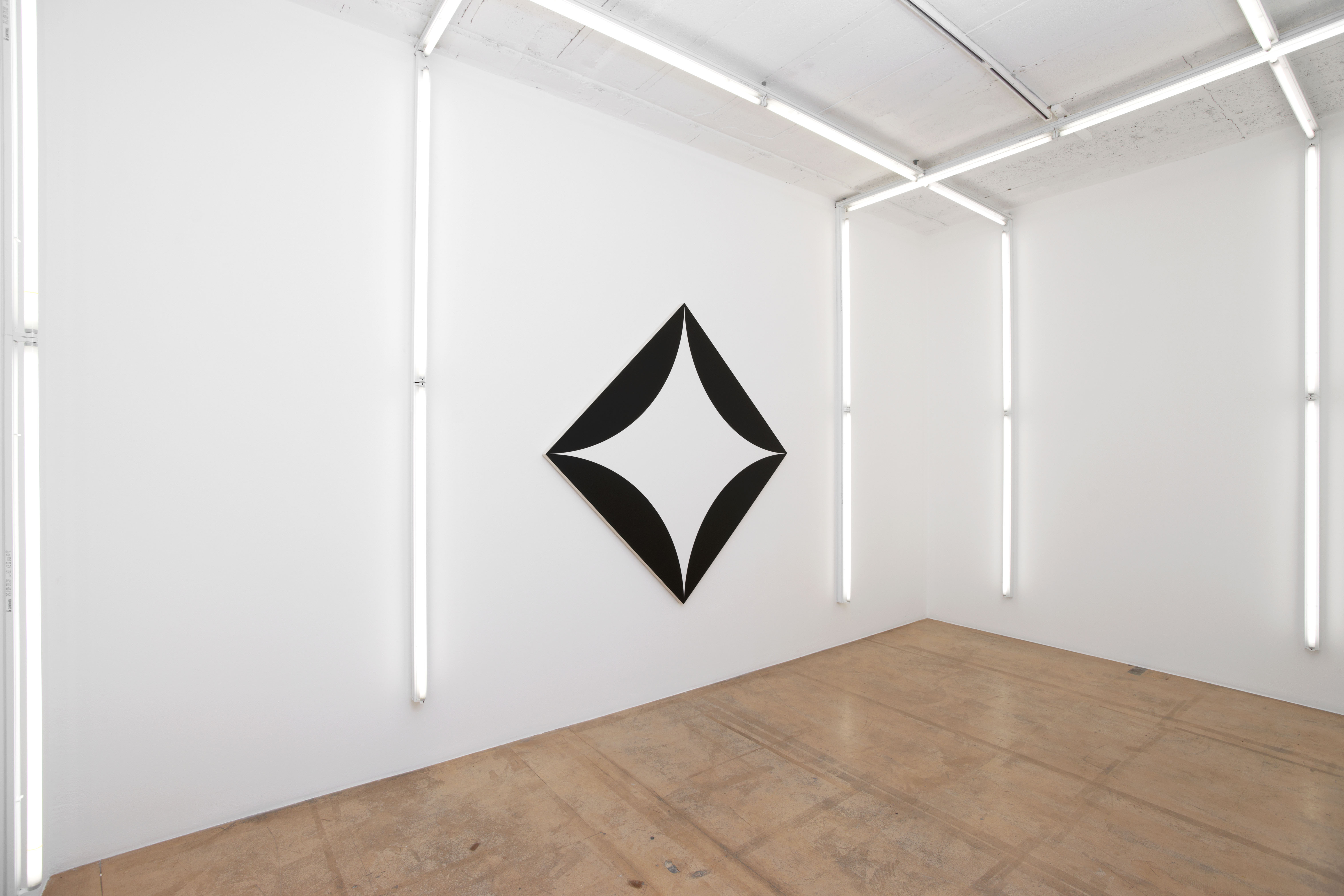
STÉPHANE DAFFLON
MAMCO, Geneva, Switzerland
JUNE 24 — SEPTEMBER 27, 2009
Stéphane Dafflon's work seems to follow in the footsteps of the abstract art bequeathed by radical modernism. In Switzerland, in particular, the pictorial research theorized by Max Bill has had a lasting influence on painters. But if the filiation is important, it is also rebellious. From the 1960s onwards, this rebellious lineage has tugged at abstraction, turning on its head the position of the modernists who associated spiritual and mystical dimensions with the abstract approach.
When S. Dafflon began his art studies in the early 1990s, abstraction had already undergone its Copernican revolution. The contagion of constructed and non-figurative aesthetics had installed the visual culture of abstraction in our environment, fashion and graphic design had seized on it, abstraction was everywhere...”. The uncomplicated rereading of modernism and the abandonment of a virtuous moralism cloaked in academic heritage [...]”, to quote John M Armleder, allowed a young artist to combine the data of art movements, mental images, musical rhythms, systems of signs and codes, design and popular culture. For S. Dafflon, these superimpositions seem as easy as sliding a mouse. On the computer screen - his unfailing working tool - shapes are constructed, deformed, combined and moved, the angles of a square rounded, a circle ovalized, a line stretched by curving or thinned to a point. From canvases, painting is also envisaged on the wall: linked to a specific location or “adaptable” to different spatial situations, his mural paintings (the motifs can also be created with colored scotch tape) punctuate walls and alter the perception of the architectural environment. In 2002, S. Dafflon created a mural at Mamco (PM017) on the walls surrounding the building's central core on the second floor. Rectangles with rounded corners, of different sizes and colors, were arranged on an axis inclined to the floor. The mural, elusive in its entirety, disrupted architectural orthogonality through its inclination, with the floor appearing to absorb the walls, and disturbed visitors' sense of verticality as they walked along the corridor.
S. Dafflon's work is not confined to the single medium of painting, which nevertheless identifies his work. His sculptural objects are conceived from forms drawn on the screen. The science of design provides him with techniques and materials that enable the form to become an object in the real world. Made of wood, translucent Plexiglas or stainless steel, painted or mirrored, they echo the shapes on the walls, creating reflective effects and visually breaking up space by opening up other perspectives. Some of these large-scale pieces block the viewer's path (Silent Gliss 1056, 2003), while others, on the scale of furniture, seem to “emerge” from a painting whose three-dimensional motifs they reproduce.
AST, PM, 000, the titles of the works are not cabalistic terms, they indicate what they are, their number and their position in the order of creation: AST, acrylic on canvas, PM for the murals, the numbers; the sculptural objects are simply numbered from the first, 001.
S. Dafflon's art is a silent art for the “receptive eye”, to quote the title of a major MoMA exhibition in 1965. But the spaces he creates have a visual rhythm and sonority. The paintings echo like a wave from one corner of the rooms to another, the colors meticulously calibrated, the graphic interplay of the painting's lines with the fluidity of the walls and the luminous lines of the neon lights stretching from the ceiling to the walls, Turnaround's journey provokes impressions that raise questions about visual reality.
Il n’y a pas d’image dans le travail de S. Dafflon pas plus qu’il n’y a trace des idéaux historiques de la modernité. En incorporant librement aux peintures abstraites le monde dans lequel il vit, sa technicité et son savoir, il leur donne la vivacité de l’immédiateté de l’image publicitaire sans rompre avec l’abstraction comme mode de réalisation.

|

|

|

|

|

|

|
|
© Ilmari Kalkkinen